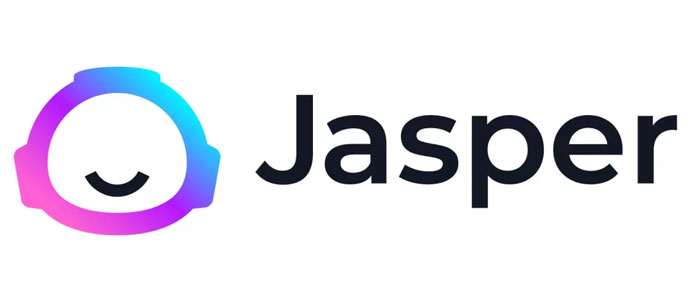Generative AI is a branch of AI focused on creating new content. Generative AI is capable of revolutionizing industries. In art, it crafts unique visuals and music. In healthcare, it aids drug design by predicting molecular structures. For retail, it designs products or simulates fashion styles. In media, it generates scripts or visual effects. Practically, each one of us can harness the strengths of AI and use it to our advantage. However, generative AI solutions are still expensive to use. To help you benefit from generative AI, we are here with a list of top free generative AI tools that you may use.
The simplest definition of Generative AI
You can think of the generative AI as an artist trained by observing a very large number of paintings. Imagine teaching someone to draw cats by showing them thousands of cat pictures. Over time, even without seeing a new picture, they can draw a cat. In the AI world, tools like Generative Adversarial Networks or GANs (think of it as an art student and a critic working together) help achieve this. The “student” tries to make new drawings, and the “critic” gives feedback until the drawings are quite good. This AI can create things like images, stories, or even music.
It learns from the data it sees, and then it can come up with new, original creations. It’s like training your computer to be a creative artist using lots of examples. However, just as an artist can draw both beautiful and misleading pictures, this AI can be used for both amazing and not-so-good purposes. For instance, it can make realistic-looking videos that never actually happened, which can sometimes be concerning.
Before we start with the list, we’d like to remind you that in order to use a generative AI tool to its full potential you must provide a well-thought-out and unambiguous input and then keep reiterating with small changes in the input till you set the desired results. And now we are ready to have a look at the list. Please note that we have not included tools like Dall-E, Chat GPT, Google Bard and YAhoo Bing as they are mostly known to anyone interested in generative AI.
1. BLUEWILLOW AI
Bluewillow is a prompt-based generative AI tool to create images. With Bluewillow AI you can create images from logos and comic characters to digital artwork by describing the image. The AI tool is user-friendly and accessible to all for free. You will have to register on Discord (a community platform) to be able to use Bluewillow AI.
2. JASPER
Unlike its prompt-based peers, Jasper is a conversational generative AI tool. This means that instead of giving precise commands or well-worded prompts, you can simply have a conversation with AI in a chat-like interface. As Jasper remembers previous conversations you can refine responses with each engagement. Jasper currently supports 29 languages so you can converse with Jasper in your native language. Jasper also has a Chrome extension that makes it very easy to use this tool.
3. GITHUB COPILOT
Well, this one’s exclusively for programmers or those learning software programming. GitHub Copilot is trained on billions of lines of code and it turns prompts into coding suggestions across multiple coding languages. As a matter of fact, this AI tool is used more by corporates than individual coders.
4. ELEVEN LABS
Eleven Lab’s speech synthesis AI creates unbelievably lifelike speech in any language and voice. It allows users to convert written text to professional audio quickly. The AI takes into account the context and emotions and lets you control the characteristics, pace and tone of the generated audio.
5. CHATSONIC
Chatsonic is built on top of ChatGPT and provides an NLP-based chat conversational AI. This is similar to Jasper in some terms but Chatsonic has its own set of rich features including image generation (photosonic). It is fast becoming one of the best alternatives to ChatGPT. Their free plan offers almost all the features you might need. It has a limit of 10,000 words/month, however, for an average user that might just be ok.
6. SYNTHESYS-X
Sythesys X is an AI tool that lets you create your own versions of any image online. Synthesys works via a Chrome extension. It is especially helpful when you aren’t able to describe an image accurately in prompts but you could find reference images online. These generated images are revisualisation of the image you choose and not an altered version of the same image. A very helpful tool for those who are looking for quick results.
7. COPY.AI
If you are looking for an AI tool to create promotional material and content for sales and content marketing, then you must try Copy.ai. You can create blog posts, sales emails, social media captions, ad copy, code and a lot more with this generative AI. What’s more interesting is that unlike ChatCPT and other AI built on top of ChatGPT, Copy.ai works with real-time data. So go ahead and give it a try if you are a sales professional, a digital marketer or even a coder.
8. SPEECHIFY
Many companies have been trying to crack text-to-speech technology for more than a decade now. However, there are many challenges in creating a human-like speech due to nuances in accent, expressions, mood, context etc., of the content. Speechify is a text-to-speech application that overcomes most of these challenges with the use of AI technology. You can get very good results whether you are trying to convert your documents, web articles, eBooks or PDFs into human-like speech.
In addition to the above tools there are many more generative AI options but we’ll save them for the next articles. We sincerely hope that you’ll find these options to be useful. Please drop in your comments to let us know. Also, don’t forget to check our Tech section for even more interesting tech content.





